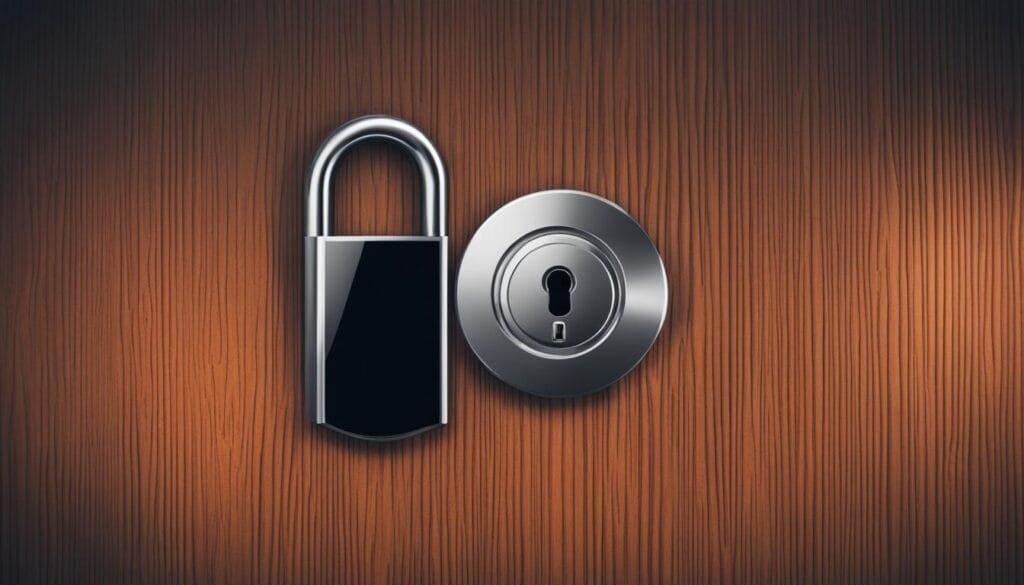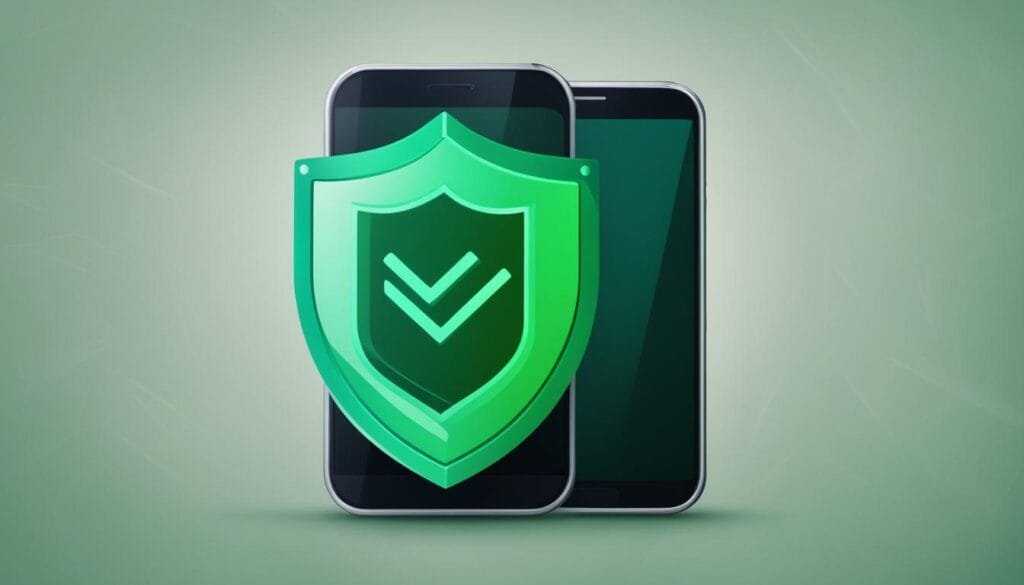In today’s digital age, where cyber threats are becoming increasingly sophisticated, it is crucial for businesses and individuals alike to prioritize the security of their sensitive data. One effective way to enhance security and protect against unauthorized access is through the implementation of multi-factor authentication (MFA) in mobile banking.
MFA provides an additional layer of security by requiring users to provide two or more authentication factors to verify their identity. This layered approach to security adds an extra level of protection, making it significantly harder for hackers to gain unauthorized access to user accounts.
Authentication factors can include knowledge factors, such as passwords or PINs, possession factors like security tokens or authentication apps, and even biometric factors such as fingerprints or facial recognition.
By utilizing multiple factors of authentication, mobile banking apps can ensure secure logins and protect against cyber threats. This not only provides enhanced protection for users but also instills confidence in the reliability and security of the mobile banking platform.
With the prevalence of online fraud and identity theft, organizations must prioritize the implementation of multi-factor authentication to safeguard sensitive financial information. By doing so, they can mitigate the risks associated with unauthorized access and ensure a secure mobile banking experience for their customers.
Key Takeaways:
- Multi-factor authentication (MFA) provides an additional layer of security in mobile banking.
- Authentication factors include knowledge factors, possession factors, and biometric factors.
- MFA ensures secure logins and enhances protection against cyber threats.
- Implementing MFA is crucial for safeguarding sensitive financial information.
- MFA instills confidence in the security of mobile banking platforms.
What are the Authentication Factors?
Authentication factors are the methods used to verify a user’s identity through more than one authentication method. The commonly used authentication factors include:
- Knowledge factor: This refers to something that the user knows, such as a password or PIN. It is a common form of authentication and is widely used in various applications.
- Possession factor: This involves something that the user possesses, such as a security token, smart card, or a physical key. The user needs to have the possession factor in order to authenticate their identity.
- Biometric factor: This factor relies on unique biological characteristics of an individual, such as fingerprints, facial recognition, or iris scanning. Biometric authentication provides a high level of security as it is difficult to replicate or fake.
- Location factor: This factor uses the geographical location of the user as a means of authentication. It can be determined based on IP address, GPS coordinates, or Wi-Fi proximity.
- Time factor: This factor verifies the user’s identity based on the specific time of the authentication attempt. It can be achieved through time-based one-time passwords (TOTP) or one-time codes that expire after a certain period.
By combining these different authentication factors, organizations can create a multi-factor authentication system that provides robust security and protection against unauthorized access. This layered approach helps to ensure that only legitimate users are granted access to sensitive systems and information.
Image:
| Authentication Factor | Description |
|---|---|
| Knowledge Factor | Refers to something that the user knows, such as a password or PIN. |
| Possession Factor | Involves something that the user possesses, such as a security token, smart card, or a physical key. |
| Biometric Factor | Relies on unique biological characteristics of an individual, such as fingerprints, facial recognition, or iris scanning. |
| Location Factor | Uses the geographical location of the user as a means of authentication, such as IP address or GPS coordinates. |
| Time Factor | Verifies the user’s identity based on the specific time of the authentication attempt. |
How Does Two-Factor Authentication Work?
Two-factor authentication (2FA) is a security process that adds an extra layer of protection to the authentication process. It involves verifying a user’s identity using two separate factors. The first factor is typically something the user knows, such as a password. The second factor is something the user possesses, such as a security token or a one-time code sent to their mobile device. By requiring two different factors, two-factor authentication significantly reduces the risk of unauthorized access, even if the password is compromised.
The authentication process begins with the user entering their username and password, which serves as the first factor of authentication. Once the credentials are verified, the system prompts the user to provide the second factor. This can be a one-time code generated by an authentication app or sent via SMS, or it could involve using a biometric factor, such as a fingerprint or facial recognition. The user must successfully complete both steps to gain access to their account.
Implementing two-factor authentication adds an additional layer of security to the login process. It ensures that even if an attacker somehow manages to obtain a user’s password, they would still be unable to access the account without the second factor. This second step acts as a barrier, making it much more difficult for hackers to gain unauthorized access to accounts and sensitive information.
Authentication Methods
There are various methods used for the second factor of authentication in two-factor authentication. One common method is the use of one-time codes sent via SMS. These codes are typically valid for a short period and provide an additional layer of security. Another method involves the use of authentication apps that generate one-time codes on the user’s mobile device. These apps often rely on time-based algorithms or push notifications to provide a secure and convenient method for the second factor.
Biometric factors are also becoming increasingly popular in two-factor authentication. These include fingerprint recognition, facial recognition, and even iris scanning. Biometrics provide a high level of security as they are unique to each individual and cannot be easily replicated or stolen.
In summary, two-factor authentication works by requiring users to provide two separate factors to verify their identity. By implementing this additional layer of security, organizations can significantly enhance the protection of user accounts and sensitive information, reducing the risk of unauthorized access and potential data breaches.
Types of Two-Factor Authentication Products
Two-factor authentication products come in various forms, each offering unique features and functionalities to enhance security. These products provide an extra layer of protection by requiring users to provide two separate authentication factors to verify their identity. Here are some of the common types of two-factor authentication products:
Authentication Tokens
Authentication tokens are physical devices that generate one-time passwords or codes. These tokens can be in the form of hardware tokens or software tokens. Hardware tokens are small devices that users carry with them, whereas software tokens are typically installed on a mobile device or computer. Authentication tokens provide an additional security measure by generating unique codes that expire after a short period, ensuring that the authentication process is secure.
Hardware Tokens
Hardware tokens are physical devices that generate one-time passwords or codes. These tokens are often small and portable, designed to be carried by the user. When logging in to a system or application, the user is prompted to enter the code displayed on the hardware token. This code is unique and changes periodically, providing an additional layer of security. Hardware tokens are particularly useful in scenarios where users do not have access to a mobile device or in environments where mobile devices are not allowed.
Software Tokens
Software tokens, also known as authentication apps, are applications installed on a mobile device or computer. These apps generate one-time passwords or codes that can be used for authentication. Software tokens are convenient as they eliminate the need for physical hardware, and users can easily access the authentication codes through their mobile devices. Additionally, software tokens can provide an extra layer of security by leveraging other security features present on the mobile device, such as biometric authentication.
Authentication Codes
Authentication codes are randomly generated codes that are sent to the user through various means, such as SMS, email, or voice call. These codes are used in conjunction with a password to verify the user’s identity. The authentication code is typically time-sensitive and expires after a short period. This type of two-factor authentication is widely used due to its simplicity and ease of implementation.
| Type of Two-Factor Authentication Product | Description |
|---|---|
| Authentication Tokens | Physical devices that generate one-time passwords or codes. |
| Hardware Tokens | Small portable devices that generate unique codes for authentication. |
| Software Tokens | Applications installed on mobile devices or computers that generate authentication codes. |
| Authentication Codes | Randomly generated codes sent to users through SMS, email, or voice call. |
Conclusion
Multi-factor authentication plays a critical role in enhancing security and protecting against cyber threats, especially in the context of mobile banking. By implementing multi-factor authentication, organizations can provide additional layers of protection and ensure that only authorized individuals can access sensitive financial information and perform transactions.
The use of authentication factors such as passwords, security tokens, and biometrics adds an extra level of security that makes it significantly harder for attackers to breach user accounts. This increased security helps to safeguard against cyber threats and unauthorized access to personal or financial data.
Furthermore, the integration of two-factor authentication with mobile devices allows for secure logins and enhanced user authentication. With the rise of mobile banking, it is crucial to prioritize the security of these transactions. Multi-factor authentication provides the necessary measures to protect against potential breaches and fraudulent activities, ensuring a secure mobile banking experience for users.
As cyber threats continue to evolve, it is essential for individuals and organizations to prioritize the implementation of multi-factor authentication to safeguard their financial data and maintain a secure mobile banking experience. The combination of multiple authentication factors and the use of secure verification methods create a robust defense against potential threats, giving users peace of mind and confidence in their online transactions.
FAQ
What is two-factor authentication (2FA)?
Two-factor authentication is a security process that requires users to provide two different authentication factors to verify their identity.
Why is two-factor authentication important?
Two-factor authentication adds an additional layer of security by making it more difficult for attackers to gain unauthorized access to user accounts, even if the password is compromised.
What are the commonly used authentication factors?
The commonly used authentication factors include passwords, security tokens, and biometrics.
How does two-factor authentication work?
Two-factor authentication involves a multistep process that verifies a user’s identity using two separate factors, such as a password and a security token.
What types of two-factor authentication products are available?
There are various types of two-factor authentication products available, including authentication tokens, hardware tokens, software tokens, and authentication codes.
How does multi-factor authentication enhance security in mobile banking?
By implementing multi-factor authentication, organizations can provide additional layers of protection and ensure that only authorized individuals can access sensitive financial information and perform transactions.
How Does Identity Shield Ensure the Security of My Digital Identity in Mobile Banking?
Identity Shield plays a crucial role in securing mobile banking identities. With its advanced technology and robust features, it ensures your digital identity is protected from potential threats and unauthorized access. By offering multi-factor authentication, encryption, and real-time fraud monitoring, Identity Shield safeguards your personal information and financial transactions, providing you peace of mind while using mobile banking services.


Pingback: Unlocking Encryption: The Key to Secure Mobile Banking – Straight Fire Money